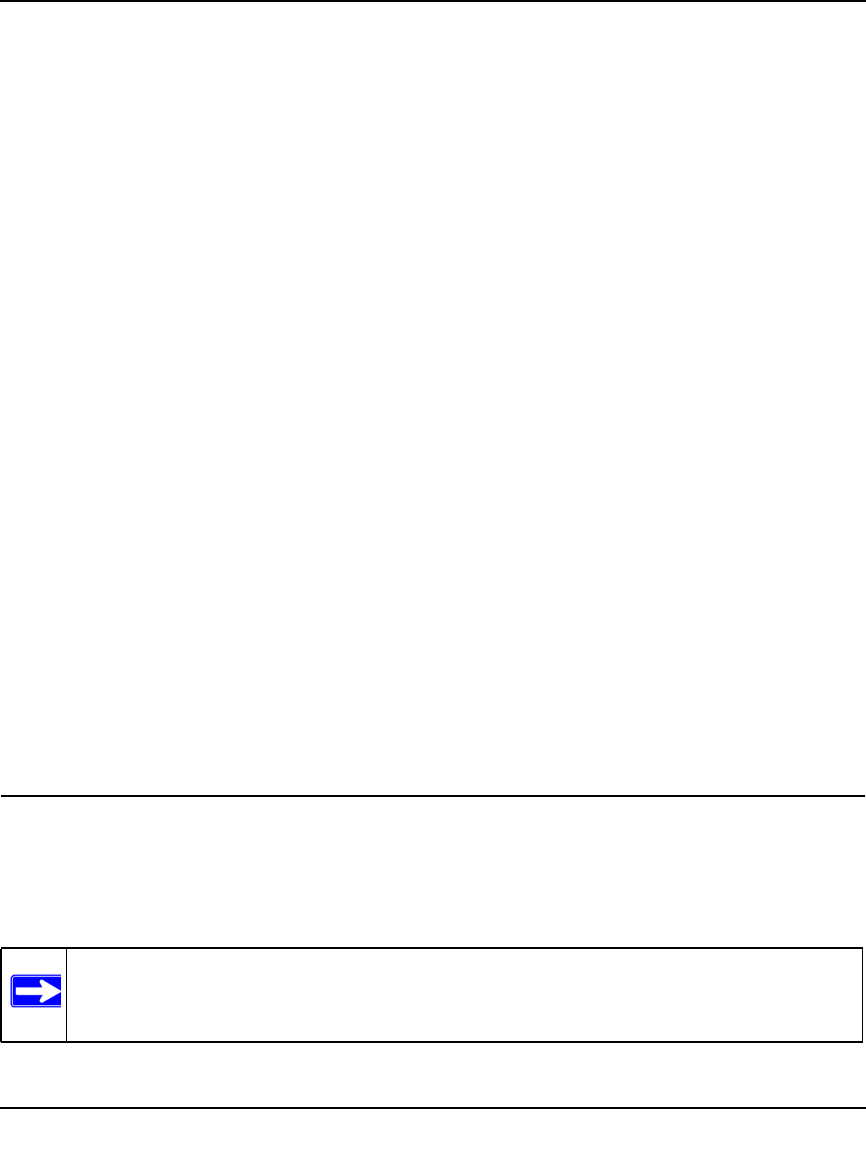
ProSafe Gigabit 8 Port VPN Firewall FVS318G Reference Manual
3-2 LAN Configuration
v1.1, August 2010
The VPN firewall will deliver the following settings to any LAN device that requests DHCP:
• An IP address from the range that you have defined.
• Subnet mask.
• Gateway IP address (the VPN firewall’s LAN IP address).
• Primary DNS server (the VPN firewall’s LAN IP address).
• WINS server (if you entered a WINS server address in the DHCP section of the LAN Setup
screen).
• Lease time (date obtained and duration of lease).
DHCP Relay options allow you to make the VPN firewall a DHCP relay agent. The DHCP Relay
Agent makes it possible for DHCP broadcast messages to be sent over routers that do not support
forwarding of these types of messages. The DHCP Relay Agent is therefore the routing protocol
that enables DHCP clients to obtain IP addresses from a DHCP server on a remote subnet, or
which is not located on the local subnet. If you have no configured DHCP Relay Agent, your
clients would only be able to obtain IP addresses from the DHCP server which is on the same
subnet. To enable clients to obtain IP addresses from a DHCP server on a remote subnet, you have
to configure the DHCP Relay Agent on the subnet that contains the remote clients, so that it can
relay DHCP broadcast messages to your DHCP server.
When the DNS Proxy option is enabled, the VPN firewall will act as a proxy for all DNS requests
and communicates with the ISP’s DNS servers (as configured on the Broadband ISP Settings
screen). All DHCP clients will receive the primary and/or secondary DNS IP address along with
the IP address where the DNS proxy is running, that is, the VPN firewall’s LAN IP address. When
disabled, all DHCP clients will receive the DNS IP addresses of the ISP excluding the DNS proxy
IP address.
Configuring the LAN Setup Options
The LAN Setup screen allows configuration of LAN IP services such as DHCP and allows you to
configure a secondary or “multi-home” LAN IP setup in the LAN. The default values are suitable
for most users and situations.
Note: If you enable the DNS Relay feature, you will not use the VPN firewall as a DHCP
server but rather as a DHCP relay agent for a DHCP server somewhere else on
your network.


















